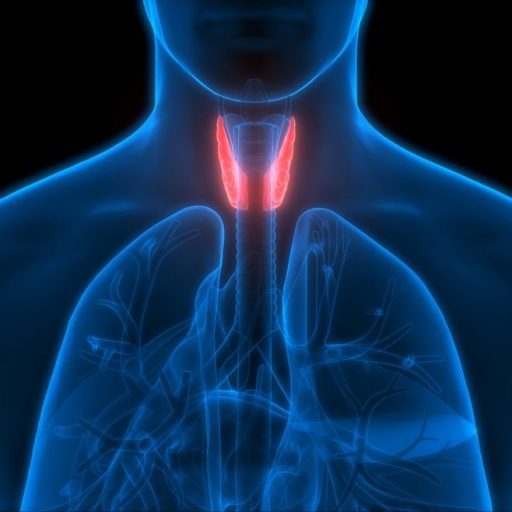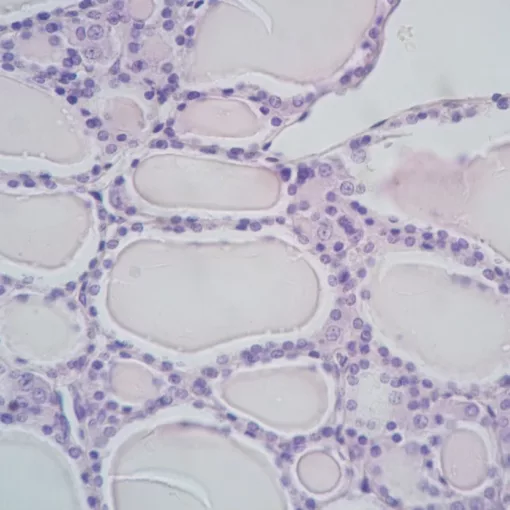Definition of Overactive Thyroid
The thyroid or the thyroid gland is one of the largest endocrine glands in the body. It is an organ that is found on the anterior side of the neck. It is derived from the Greek word, thyreo, which means shield. A thyreo is a Greek army shield shaped like a door. Another way to define the thyroid gland would be, an endocrine gland consisting of two lobes, one on each side of the trachea, joined by a narrow isthmus, producing hormones (thyroxine and triiodothyronine), which require iodine for their elaboration and are concerned in regulating metabolic rate; it also secretes calcitonin.
A calcitonin is a peptide hormone, produced by the thyroid gland in humans that acts to lower plasma calcium and phosphate levels without augmenting calcium accretion, also called thyrocalcitonin. The thyroid gland shields us from the chemical reactions in our body. The notch on the upper part of your Adam’s apple is where your thyroid is. It moves in position during swallowing.
The thyroid gland is firmly attached to the trachea which is the reason why it moves when we swallow. The thyroid controls the sensitivity of our body to other hormones and how our body uses up energy. It produces thyroid hormones which regulate the rate of metabolism. It also affects the growth and function rate of the other systems in the body.
An overactive thyroid is also known as hyperthyroidism. This thyroid disorder means that the thyroid gland produces too much thyroid hormone needed in the body. The thyroid gland controls the pace of one’s body process such as metabolism. Women are more likely to have overactive thyroid gland the men.
When the thyroid gland produces too much thyroid hormone, metabolism increases. This makes an individual who has hyperthyroidism gain weight. Others feel fatigue but have trouble or difficulty in sleeping. An individual who is able to notice or feel any hyperthyroidism is considered lucky enough as some people do not have any idea that they are already suffering from a thyroid disorder.
How is overactive thyroid (hyperthyroidism) treated in women?
Most of the time, you’ll be sent to an endocrinologist, a specialist in hormone problems who will plan your treatment. The main ways to treat an overactive thyroid (hyperthyroidism) in women are:
Medicine
Most of the time, thionamides are used to treat an overactive thyroid in women. They stop the gland from making more hormones than it needs to. Carbimazole and propylthiouracil are the most common ones.
Usually, you’ll need to take medicine for 1 to 2 months before you start to feel better. You may also be given a medicine called a beta blocker to help ease some of your symptoms while you wait for your treatment to start.
When your endocrine hormone levels are under control, you may be able to stop taking your medicine slowly. But some women must keep taking medication for years or even for the rest of their lives.
Radioactive Iodine Treatment
Radioactive iodine treatment is a type of radiotherapy that kills the cells in the thyroid gland. This makes the gland make less hormones. It’s a very effective way to treat a gland that works too much.
You are given a drink or a pill with iodine and a small amount of radiation. Your gland absorbs the radiation. Most people only need to go to the doctor once.
You may not feel the full benefits for a few weeks or months, so you might need to take a medicine such as carbimazole or propylthiouracil temporarily.
Radioactive iodine treatment uses a very low dose of radiation, but there are some precautions you’ll need to take afterward:
- Stay away from children and pregnant women for a few days or weeks.
- Try not to get pregnant for at least six months.
- Treatment with radioactive iodine is not suitable if your are pregnant or nursing. It’s also not good if your overactive thyroid is making your eyes hurt very badly.
[visual-link-preview encoded=”eyJ0eXBlIjoiaW50ZXJuYWwiLCJwb3N0IjoxMTQyLCJwb3N0X2xhYmVsIjoiUG9zdCAxMTQyIC0gVGh5cm9pZGVjdG9teSIsInVybCI6IiIsImltYWdlX2lkIjoxMTUxLCJpbWFnZV91cmwiOiJodHRwczovL3d3dy50aHlyb2lkaW53b21lbi5vcmcvd3AtY29udGVudC91cGxvYWRzLzIwMjMvMDUvVGh5cm9pZGVjdG9teS1UaHlyb2lkX1N1cmdlcnkud2VicCIsInRpdGxlIjoiVGh5cm9pZGVjdG9teSIsInN1bW1hcnkiOiJBIHRoeXJvaWRlY3RvbXkgaXMgYSBzdXJnaWNhbCBwcm9jZWR1cmUgaW4gd2hpY2ggcGFydCBvciBhbGwgb2YgdGhlIHRoeXJvaWQgZ2xhbmQgaXMgcmVtb3ZlZC4gRm91bmQgYXQgdGhlIGZyb250IG9mIHRoZSBuZWNrLCB0aGUgYnV0dGVyZmx5LXNoYXBlZCB0aHlyb2lkIGdsYW5kIGlzIGEgY3J1Y2lhbCBwYXJ0IG9mIHRoZSBlbmRvY3JpbmUgc3lzdGVtIGFuZCBwcm9kdWNlcyBob3Jtb25lcyB0aGF0IHJlZ3VsYXRlIG1ldGFib2xpc20uIFRoeXJvaWRlY3RvbWllcyB0cmVhdCB0aHlyb2lkIGNvbmRpdGlvbnMgc3VjaCBhcyB0aHlyb2lkIG5vZHVsZXMsIGNhbmNlciwgYW5kIGh5cGVydGh5cm9pZGlzbSwgYW5kIGNhbiBbJmhlbGxpcDtdIiwidGVtcGxhdGUiOiJ1c2VfZGVmYXVsdF9mcm9tX3NldHRpbmdzIn0=”]
Surgery
Sometimes, you may need surgery to remove all or part of the organ. This could be your best choice if:
- Your gland is very swollen because of a large goiter.
- An overactive thyroid is causing severe eye problems.
- You can’t get other, less invasive treatments.
- Your symptoms come back even though you’ve tried other treatments
Most of the time, it’s best to take out the whole gland because it stops hyperthyroidism symptoms from returning. But since you don’t have the organ anymore, you’ll have to take medicine for the rest of your life. Doctors use these same medicines to treat an underactive thyroid.
How is underactive thyroid (hypothyroidism) treated in women?
Treating an underactive thyroid in women involves taking daily hormone replacement tablets, known as levothyroxine, to raise thyroxine levels.
Typically, the dose of levothyroxine is gradually increased until the correct level is reached. This can take some time, as it can take a while for your body to adjust to the new hormone levels.
Once you’re taking the correct dose of levothyroxine, you’ll typically need regular blood tests once a year to monitor your hormone levels and ensure that your treatment is still effective.
Not receiving proper treatment can lead to many complications, including heart disease, goitre, pregnancy problems, and a life-threatening condition called myxoedema coma. With proper treatment, however, you should be able to lead a normal and healthy life.






